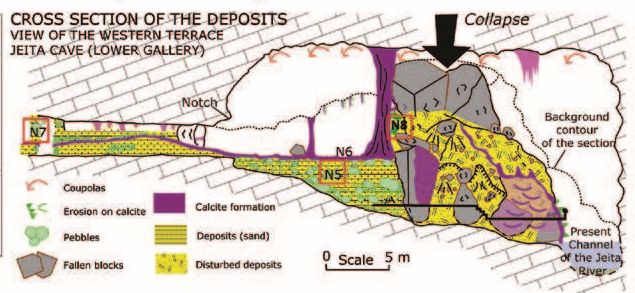Subsurface flux adjustments and speleogenesis as inferred from sediment traps in major Lebanese cave systems
DOI:
https://doi.org/10.3986/ac.v44i1.1149Povzetek
Caves are natural sediments traps that enclose several types of allochtonous and authoctonous deposits. Study of sediments in caves help to reconstitute the hydrological functioning of caves. In Lebanon, Kessarat and Jeita horizontal caves comprise sediments traps related to collapse and/or to passages enlargements with new passages formed during the alluviation process. A speleogenic study combined with the grain-size analysis of the sedimentary sequence in the Junction Chamber (Kassarat cave) and in the Entrance Gallery (Jeita lower cave) helped to identify several stages of sediment deposition and to define types of paleoflow adjustments during and after the ceiling collapse. In this paper, we discuss the control of cave conduits on several processes: i) the flow dynamic adjustments; ii) the spatial and temporal distribution of deposits in the cave systems and, iii) the magnitude of the environmental signal recorded in sedimentary sequences. The study highlights the importance to consider the geomorphological context of sediments traps when interpreting the evolution of subsurface flows and when relating sediment inputs in caves to external environmental changes.
Prenosi

Prenosi
Objavljeno
Kako citirati
Številka
Rubrike
Licenca
Avtorji jamčijo, da je delo njihova avtorska stvaritev, da v njem niso kršene avtorske pravice tretjih oseb ali kake druge pravice. V primeru zahtevkov tretjih oseb se avtorji zavezujejo, da bodo varovali interese založnika ter da bodo povrnili morebitno škodo.
Podrobneje v rubriki: Prispevki




